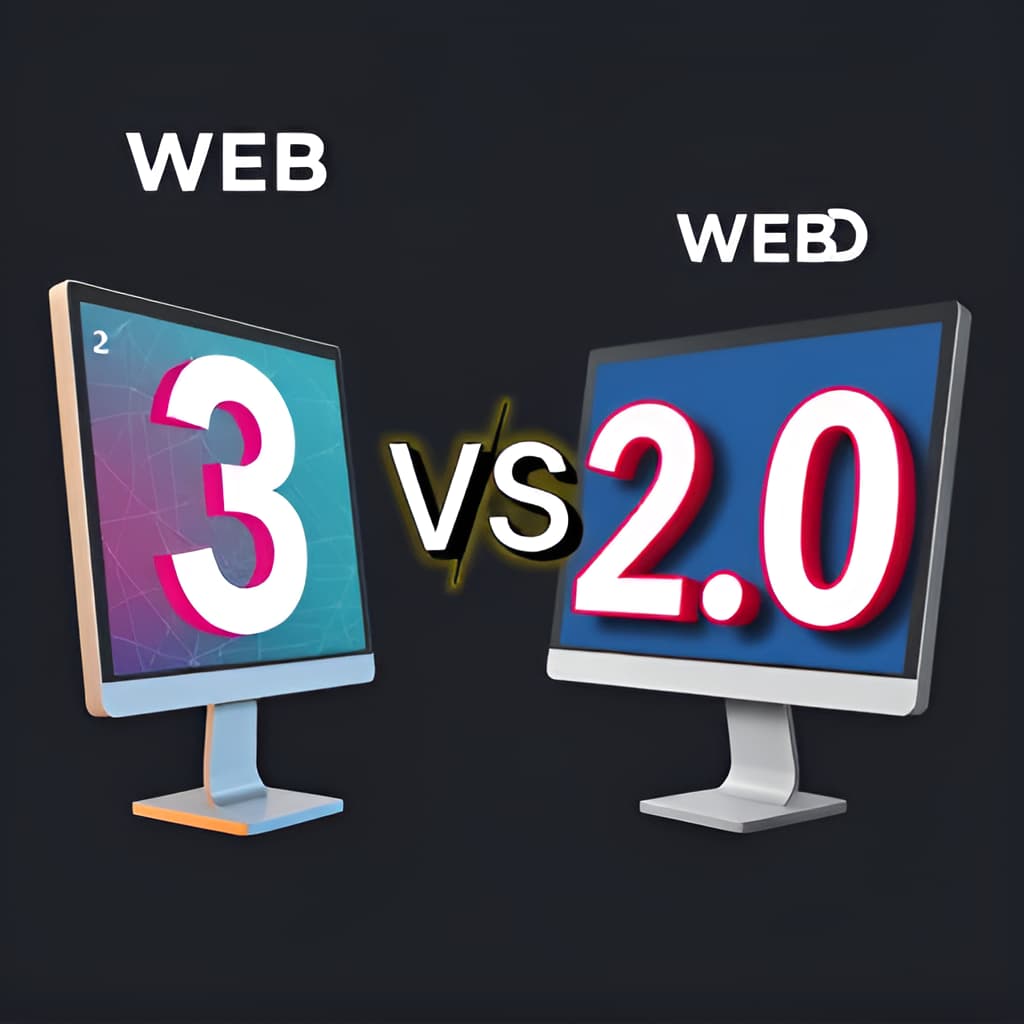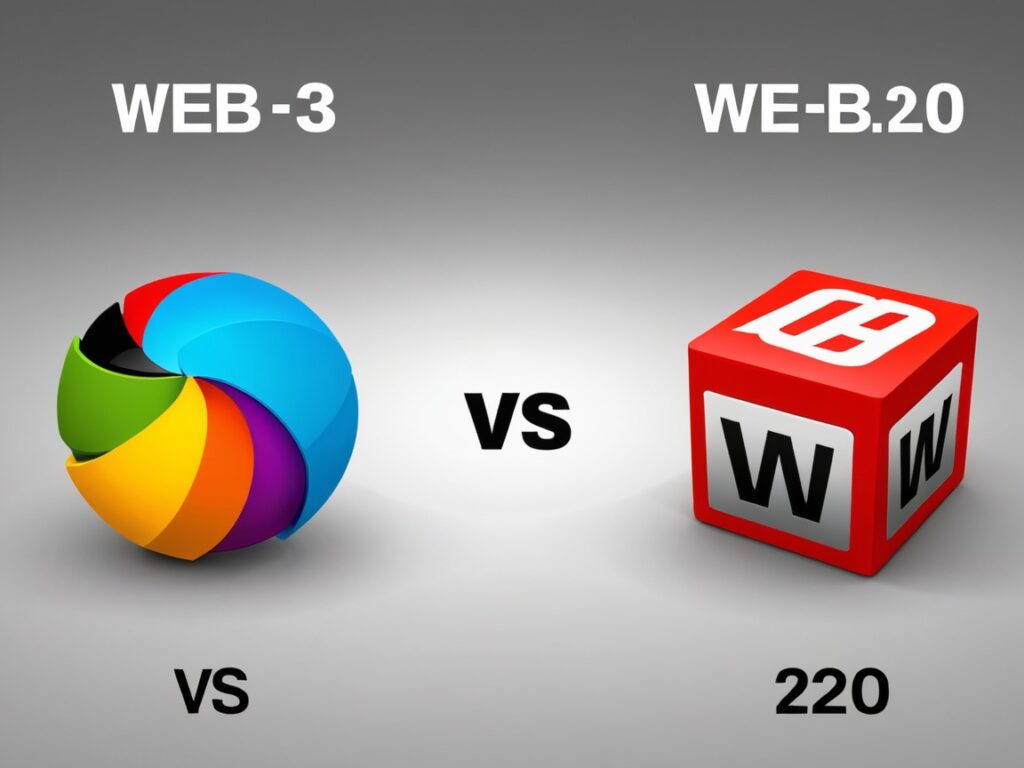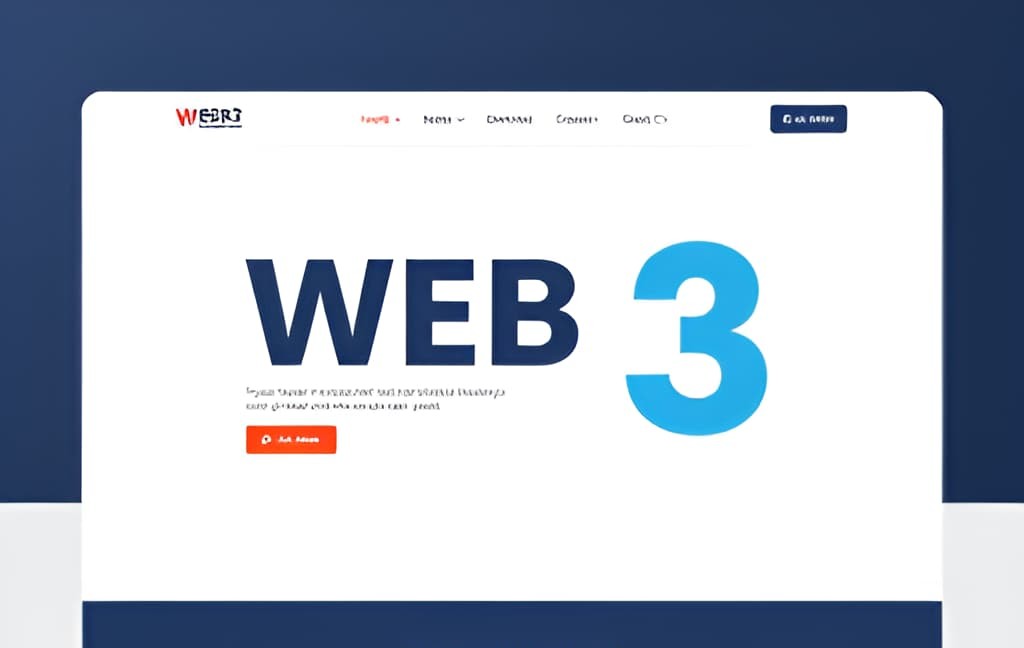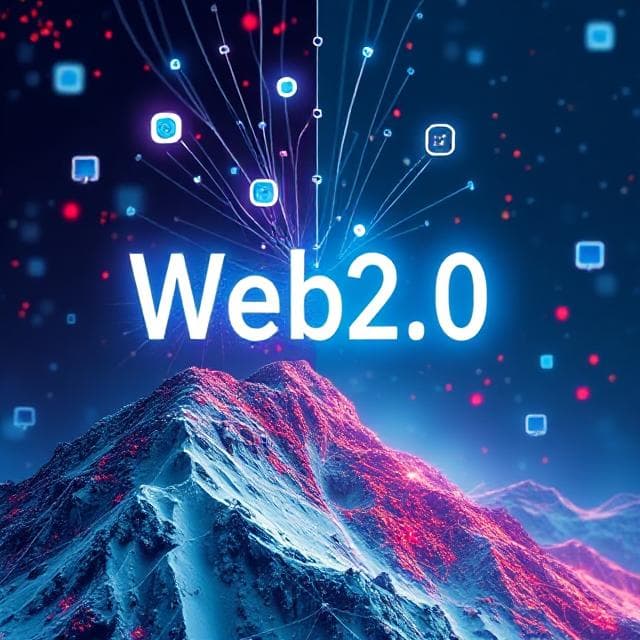
Web3: The Next Generation of the Internet and Its Business Potential
Introduction to Web3
Web3, also known as Web 3.0, represents the next evolution of the internet, emphasizing decentralization, user control, and privacy. Built primarily on blockchain technology, this aims to empower users with greater ownership of their data. Therefore reducing the dominance of large tech companies that characterize Web 2.0. Coined in 2014 by Ethereum co founder Gavin Wood. The concept gained significant traction in 2021 among cryptocurrency enthusiasts. Technology companies, and venture capital firms. Unlike Tim Berners Lee’s Semantic Web, which focused on data interoperability. This incorporates decentralization, blockchain technologies, and token based economics. Therefore to redefine how digital ecosystems operate.
Web3 introduces innovative ways to streamline enterprise collaboration and reduce friction by fostering transparency, automation, and aligned incentives. Its real value for businesses emerges where these principles translate into measurable operational benefits. Therefore this blog post explores Web3’s foundations, its strategic impact on web design and businesses alike. Whereas the challenges enterprises face in adopting this transformative technology.
Web3 Foundations
Built on several core principles that distinguish it from its predecessors:
Trustless Systems
Web3 enables trustless systems where rules are encoded in smart contracts on blockchain networks. These self-executing contracts automatically enforce agreements without intermediaries, ensuring transparency and reducing the risk of manipulation. For businesses, this means streamlined processes, lower transaction costs, and enhanced trust in cross-organizational collaborations.

Autonomous Digital Economies
Companies can create self-sustaining ecosystems powered by transparent, programmable logic. These ecosystems operate autonomously, enabling efficient coordination among stakeholders without centralized control. For example, supply chain networks can use Web3 to track goods in real time, ensuring authenticity and reducing delays.
Token Utility Value
Tokens are a cornerstone of Web3, serving as dynamic incentives for participation, loyalty, governance, or digital asset exchange. Businesses can leverage tokens to align stakeholder interests, incentivize customer engagement, or facilitate decentralized governance models. For instance, tokenized loyalty programs can enhance customer retention by offering tangible rewards.
Platform Features
These platforms integrate features. Therefore like digital wallets, decentralized autonomous organization (DAO) based governance, and marketplaces to support vibrant stakeholder activity. These tools enable businesses to create ecosystems where users, partners, and customers interact directly. Thereby fostering innovation and collaboration.
Strategic Business Impact
This redefines enterprise interactions by leveraging decentralization, blockchain, smart contracts, and self sovereign identity. Its strategic benefits include:
-
Direct Value Flows: By eliminating intermediaries. Therefore enables direct interactions between businesses, customers, and partners. Thereby reducing costs and improving efficiency. For example, decentralized finance (DeFi) platforms allow businesses to access capital without traditional banking intermediaries.
-
Enhanced User Engagement: Tokenized incentives and decentralized governance empower users. Therefore fostering stronger engagement and loyalty. Hence businesses can create communities where stakeholders actively participate in decision making or co creation.
-
Reduced Coordination Overheads: Smart contracts automate complex processes. Such as contract execution or supply chain management. Therefore minimizing administrative burdens and enabling real time collaboration across ecosystems.
These benefits translate into measurable outcomes, such as cost savings. Improved operational efficiency, and new revenue streams through tokenized ecosystems or decentralized marketplaces.

Can Web3 Deliver Real Value to Businesses?
The potential to deliver real value is significant, but its success depends on practical implementation. Businesses can harness Web3 to:
-
Streamline Operations: Smart contracts and blockchain reduce reliance on intermediaries. Therefore enabling faster and more cost effective transactions. For instance, logistics companies can use it to automate and verify supply chain processes, reducing errors and delays.
-
Foster Transparency: Blockchain’s immutable ledger ensures all transactions and interactions are transparent and auditable. Thereby building trust among stakeholders. This is particularly valuable in industries like finance or healthcare, where data integrity is critical.
-
Drive Innovation: Web3 enables businesses to experiment with new models, such as decentralized marketplaces or token based loyalty programs. Therefore creating competitive advantages in rapidly evolving markets.
However, the value lies in its ability to align with specific business needs. Enterprises must identify use cases where decentralization and automation provide clear advantages over traditional systems.
Challenges and Readiness
Despite its potential, Web3 adoption faces several challenges:
-
Scalability: Current blockchain networks often struggle with transaction speed and cost. Therefore limiting their ability to handle enterprise scale operations. Emerging solutions like layer 2 scaling. Protocols are addressing these issues, but widespread adoption requires further development.
-
Regulation: The regulatory landscape for these technologies, particularly cryptocurrencies and tokenized assets, remains uncertain. Therefore businesses must navigate complex legal frameworks to ensure compliance.
-
Internal Education: Enterprises need to invest in upskilling their teams to understand and implement Web3 solutions effectively. This includes training on blockchain, smart contracts, and decentralized governance models.
To overcome these challenges, businesses should start with pilot projects. Therefore focusing on high impact use cases like supply chain transparency or tokenized customer engagement. Collaborating with the experts and investing in scalable infrastructure can also accelerate adoption.
Web3 represents a paradigm shift in how businesses operate and interact with stakeholders. Whereby leveraging decentralization, blockchain, and token based economics. Therefore it offers innovative ways to streamline collaboration, reduce friction, and create value. While challenges like scalability and regulation persist, the strategic benefits. Direct value flows, enhanced engagement, and reduced overheads. Hence to make Web3 a compelling proposition for forward thinking enterprises. As the technology matures, businesses that embrace this tech. Therefore potential will be well positioned to thrive in the decentralized digital economy.

Web3 to Web2.0 Paradigm Shift
To understand Web3’s significance, it’s helpful to compare it with Web 2.0:
|
Feature |
Web 2.0 |
Web3 |
|---|---|---|
|
Control |
Centralized (Big Tech) |
Decentralized (users, networks) |
|
Data Ownership |
Controlled by platforms |
Owned by users |
|
Economic Model |
Ad-driven, platform-centric |
Token based, user centric |
|
Technology |
Client server architecture |
Blockchain, peer to peer networks |
|
Privacy |
Limited user control |
Enhanced through cryptography |
This shift from centralized control to user empowerment addresses growing concerns about privacy. Data monopolies, and platform dependency, positioning it as a response to the limitations of the current internet.
Web3: The Next Evolution of the Internet
Introduction to Web3
Web3, often referred to as Web 3.0, represents the next generation of the internet. Therefore built on the principles of decentralization, user control, and privacy. Unlike its predecessor, Web 2.0, which is dominated by Big Tech companies. Therefore controlling user generated content. This leverages blockchain technology and token based economics. Therefore to empower users with greater ownership of their data and digital interactions. Hence the term “Web3” was first coined in 2014 by Gavin Wood. Cofounder of Ethereum, and gained significant traction in 2021 among cryptocurrency enthusiasts, technology companies, and venture capital firms.
This blog post explores the core concepts of Web3, its distinction from earlier internet iterations, and its potential to transform enterprise collaboration and operational efficiency through transparency, automation, and aligned incentives.

What is Web3
This is an innovative vision for a decentralized internet. Therefore that shifts power from centralized entities to individuals. It incorporates key technologies and principles, including:
-
Decentralization: Instead of relying on centralized servers controlled by large tech companies. Therefore it operates on distributed networks, such as blockchains. Where no single entity has full control.
-
Blockchain Technology: Blockchains provide a secure, transparent, and immutable ledger. Therefore recording transactions and data, forming the backbone of Web3 applications.
-
Token Based Economics: Cryptocurrencies and tokens incentivize participation. Align stakeholder interests, and enable new economic models like decentralized finance (DeFi) and non fungible tokens (NFTs).
-
User Ownership: This prioritizes user control over personal data. Therefore allowing individuals to manage, share, or monetize their information without intermediaries.
This vision contrasts sharply with Web 2.0, where platforms like Google, Amazon, and Meta dominate. Thereby centralizing user data and monetizing it through advertising. Web3 also diverges from Tim Berners Lee’s Semantic Web. Which focused on improving data interoperability through machine-readable formats. Thereby emphasizing decentralization and economic incentives.
The Business Value of Web3
While Web3 is often associated with cryptocurrencies and NFTs. Its true potential for enterprises lies in its ability to streamline collaboration, reduce friction, and deliver measurable operational benefits. Here’s how Web3 can transform business processes:
1. Transparency
Web3’s blockchain based systems ensure that all transactions and data are recorded on a public or permissioned ledger. Therefore fostering trust among stakeholders. For example, supply chain management can benefit from transparent tracking of goods. Reducing disputes and improving accountability.
2. Automation
Smart contracts, self executing agreements coded on blockchains. Therefore enable automation of complex processes. In industries like finance or real estate, smart contracts can streamline payments, title transfers, or escrow services. Therefore reducing manual intervention and errors.
3. Aligned Incentives
Token based models align the interests of participants in a network. For instance, decentralized marketplaces can reward contributors (e.g., developers, content creators) with tokens. Therefore creating ecosystems where collaboration drives mutual benefit.
These capabilities translate into tangible benefits, such as cost savings, faster transactions, and enhanced trust Therefore making a compelling proposition for enterprises looking to innovate.

Challenges and Considerations
Despite its promise, Web3 faces several hurdles:
-
Scalability: Current blockchain networks, like Ethereum, struggle with high transaction costs and slow processing times, limiting widespread adoption.
-
Regulation: The decentralized nature of Web3 raises questions about compliance with existing laws, particularly in finance and data protection.
-
User Experience: Web3 applications often require technical knowledge, such as managing crypto wallets, which can deter mainstream users.
-
Energy Consumption: Some blockchains, particularly those using proof of work consensus, consume significant energy. Therefore raising environmental concerns.
Addressing these challenges will be critical to realizing its full potential.
The Future of Web3
As Web3 continues to evolve, its impact will likely extend beyond cryptocurrencies and NFTs to reshape industries like finance. Healthcare, supply chain, and governance. By fostering transparency, automation, and aligned incentives Therefore Web3 offers businesses innovative ways to collaborate and compete in a digital economy. However, its success will depend on overcoming technical and regulatory barriers while delivering user-friendly experiences.
In 2021, Web3 captured the imagination of cryptocurrency enthusiasts, tech giants, and investors. As we move forward, its real value will emerge where it drives measurable outcomes from streamlined operations to empowered users. Therefore heralding a new era of the internet. For more of the best information on the subject. Read our Web Design Okc Blog.
Conclusion
Web3 is more than a buzzword; it’s a vision for a decentralized, user centric internet that challenges the status quo. Whereby leveraging blockchain technology and token based economics. Therefore Web3 promises to reduce the influence of Big Tech, enhance privacy, and unlock new opportunities for collaboration and innovation. While challenges remain, the potential for Web3 to redefine how we interact with the website design and the digital world. Therefore makes it a transformative force worth watching. More sources on the subject Antonio Grasso On Twitter.
